Encouraging Persistence and Positive Attitudes toward Math
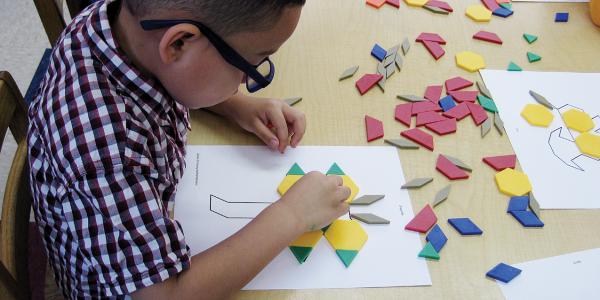
You are here
From an early age, children engage with the world in mathematical ways—from comparing the size of different toys, to singing songs that follow a repeating pattern, to dividing a treat evenly among friends.
As teachers, it’s our job to encourage young children’s math learning by providing fun, playful, and developmentally appropriate activities. This helps children experience mathematics in engaging ways and fosters learning by developing positive feelings and attitudes toward math.
Yet we often hear messages from adults that can reinforce math anxiety: “I’m not a math person” or “Don’t worry, math was hard for me too.” Comments like these tell children that there are people who can do math and people who can’t. But that’s not true!
We want all children to have can-do attitudes about math. Because if they think they don’t have “math brains,” they may easily give up and not invest time and effort in learning math.
It’s important for young children to learn that solving all kinds of challenging problems—in school and at home—requires effort, persistence, and the willingness to make mistakes and learn from them.
Here are some ideas for creating a classroom culture that encourages positive feelings toward math, values hard work, and supports children in tackling challenges head-on.
Embrace a positive attitude
Children observe and learn from everything teachers do. Model enjoyment, curiosity, and eagerness to try new things—and fearlessness about making mistakes. A positive attitude toward learning can be contagious. If you show how much you like playing with math, children will enjoy it too!
Read picture books, chant mantras, and initiate discussions
Picture books, mantras (words or phrases repeated to help concentration), and daily discussions about learning can reinforce the importance of working hard and staying positive.
Read the classic book The Little Engine That Could, by Watty Piper, to start a discussion about accomplishing difficult tasks. “I think I can—I think I can—I think I can,” says the Little Blue Engine as she chugs up the hill. This story sets the stage for talking about the role effort plays in learning, how it feels when we do things that are hard for us, and how important it is to keep trying.
Children love reciting the Little Blue Engine’s mantra, “I think I can,” to help them not give up. Did you know that mantras are often used by runners to get themselves over the finish line?
Read the bilingual English/Spanish minibook Keep Trying about a little girl who wants to swing from one end of the monkey bars to the other, but keeps falling. Her sister tells her to keep trying and encourages her to make progress toward her goal.
Teachers can help children recognize the in-between steps they make on the way to achieving their individual goals. Talk about learning as a process—a series of efforts and accomplishments—and how through hard work and persistence, they can reach their goals.
I’ve changed the way I present activities—I’m super excited about math now. The children love it when I say, ‘Yay, a new math game!’ I don’t think I ever presented math in such a happy, positive way before. . . . Children want to be involved because they understand that I like math, too. I used to think, ‘I’m not a math person,’ but I wasn’t thinking about how my feelings came across to the children.
—Charity, Worcester, MA
Highlight learning, effort, and persistence every day
Circle time is a good place to have daily learning discussions that emphasize effort and perseverance. Explain that school is a place where it’s important to try new things and not worry about mistakes. Don’t forget to mention new skills you are personally working on—baking bread, practicing yoga, learning a new language. Children might be surprised that learning something new requires effort and hard work from everyone—even teachers!
Throughout the week, notice what individual children are working hard at and what new skills and knowledge they are learning (like learning about patterns or building a tower with blocks). Remind children about their hard work using specific examples, and point out the small steps they have taken along the way to achieving their goals.
At the end of each day, ask children questions that emphasize the role of effort in the learning process: “What did you do today that was difficult for you?,” “What new thing did you try today?”
Connect children’s efforts to their pride in accomplishing goals
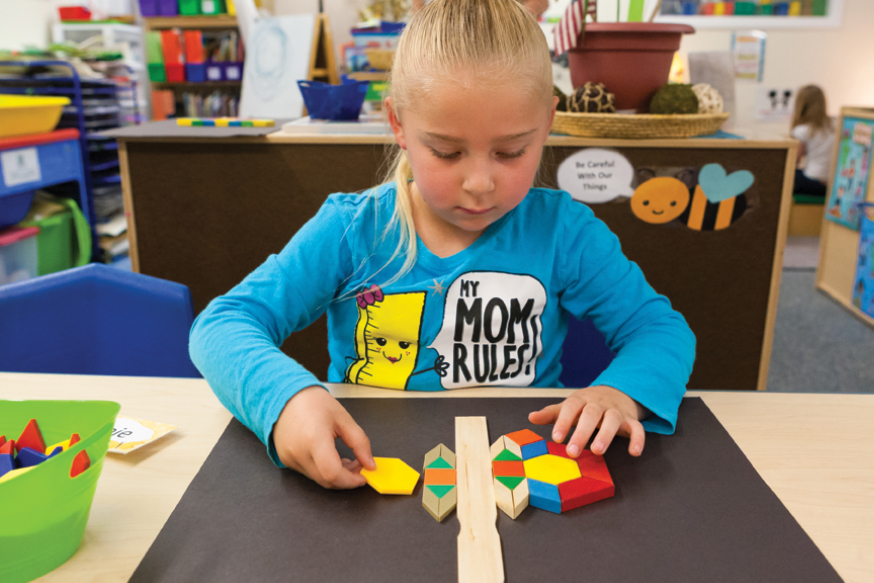 Each child is different. A challenging task for one child may be too easy for another. Like Goldilocks, help children find math activities that are “just right” for them. But resist the urge to “fix” challenging problems or tasks—it can take away from children’s confidence that they are capable of figuring things out on their own.
Each child is different. A challenging task for one child may be too easy for another. Like Goldilocks, help children find math activities that are “just right” for them. But resist the urge to “fix” challenging problems or tasks—it can take away from children’s confidence that they are capable of figuring things out on their own.
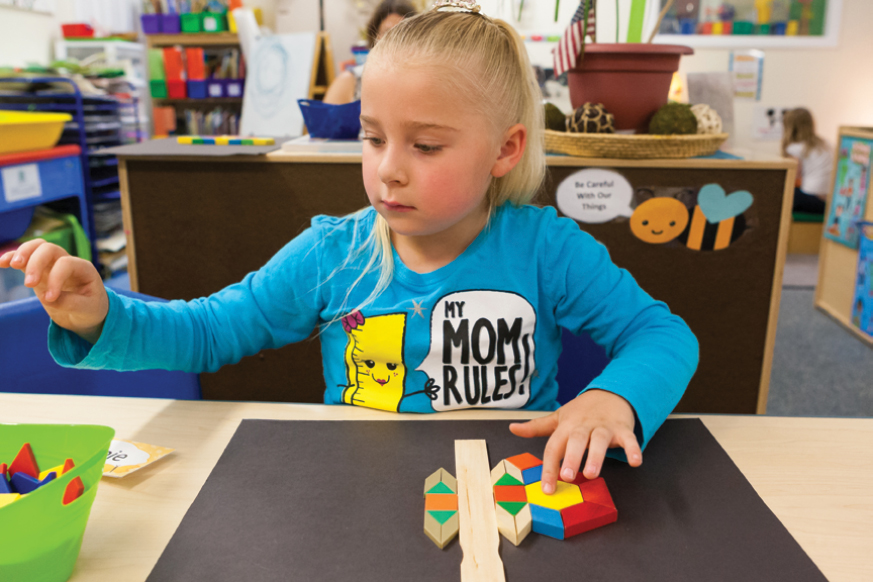 Help children notice their positive feelings when accomplishing challenging tasks: “I saw you working really hard on that pattern puzzle! How do you feel now?” For children who give an enthusiastic “I did it!,” you could say, “Wow! You feel really proud when you do something new and challenging!”
Help children notice their positive feelings when accomplishing challenging tasks: “I saw you working really hard on that pattern puzzle! How do you feel now?” For children who give an enthusiastic “I did it!,” you could say, “Wow! You feel really proud when you do something new and challenging!”
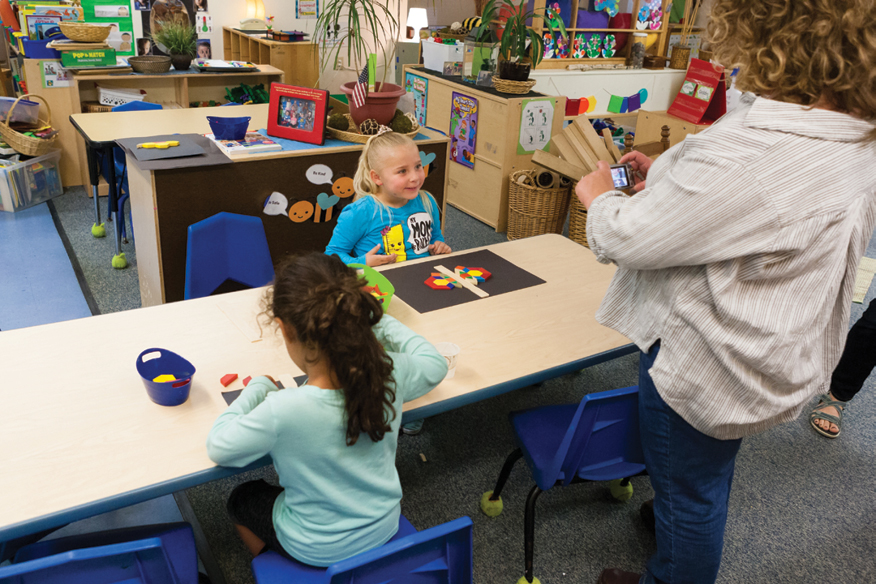 For those who experienced a bumpy road on the way to accomplishing their goals, comment, “That was a challenging puzzle and you wanted to give up, but you stuck with it! Now you feel really good about yourself!” The key here is to notice and encourage those feelings of accomplishment, satisfaction, and pride that come from working hard.
For those who experienced a bumpy road on the way to accomplishing their goals, comment, “That was a challenging puzzle and you wanted to give up, but you stuck with it! Now you feel really good about yourself!” The key here is to notice and encourage those feelings of accomplishment, satisfaction, and pride that come from working hard.
Teacher Tips for Book Reading and Discussion
When you read The Little Engine That Could, encourage children to notice that
- The little engine was small—just like them! But even though she was small, she believed she could do big things.
- The little engine tried something she had never done before.
- The little engine kept going, even when it was really difficult.
- The little engine was proud of herself for trying: “I thought I could!”
More tips
For more tips on encouraging persistence during challenging activities, see “Mastery Motivation: Persistence and Problem Solving in Preschool."
More math games
What could be more fun than playing games? Find a treasure trove of math games in the Oct/Nov 2017, Dec 2017/Jan 2018, Feb/Mar 2018, and Apr/May 2018 issues of TYC!
![]() This information has been adapted from Games for Young Mathematicians, a program of research in early mathematics at the Education Development Center (EDC), supported by funding from the National Science Foundation and the Heising-Simons Foundation. For more math information and games, visit http://ym.edc.org.
This information has been adapted from Games for Young Mathematicians, a program of research in early mathematics at the Education Development Center (EDC), supported by funding from the National Science Foundation and the Heising-Simons Foundation. For more math information and games, visit http://ym.edc.org.
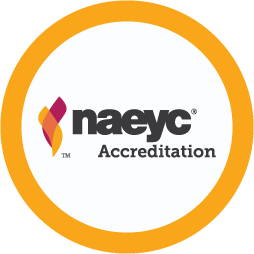
STANDARD 2: CURRICULUM
2B: Social and Emotional Development
2F: Early Mathematics
Photographs: Courtesy of EDC
Jessica Mercer Young is a research scientist and developmental and educational psychologist specializing in early learning at Education Development Center.
Kristen E. Reed, project director at EDC, has worked as a teacher, curriculum developer, professional development facilitator, and researcher. For more ways to make math engaging, challenging, and fun, visit ym.edc.org. [email protected]